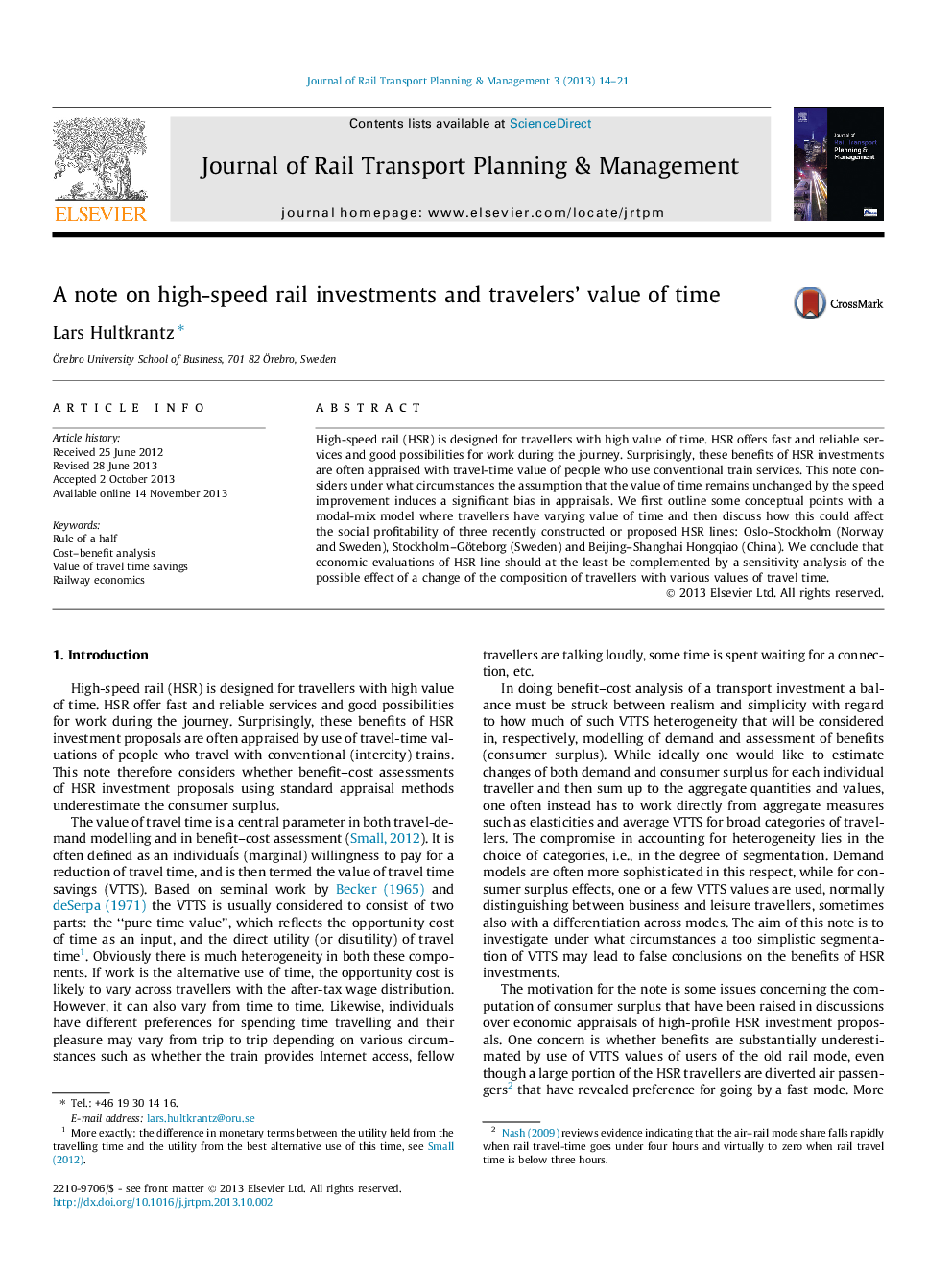| کد مقاله | کد نشریه | سال انتشار | مقاله انگلیسی | نسخه تمام متن |
|---|---|---|---|---|
| 286443 | 509477 | 2013 | 8 صفحه PDF | دانلود رایگان |
• Cost–benefit analysis of high-speed rail often ignore value of time differences.
• A modified Rule-of-a-half is derived.
• Cases in China, Sweden and Norway demonstrate.
High-speed rail (HSR) is designed for travellers with high value of time. HSR offers fast and reliable services and good possibilities for work during the journey. Surprisingly, these benefits of HSR investments are often appraised with travel-time value of people who use conventional train services. This note considers under what circumstances the assumption that the value of time remains unchanged by the speed improvement induces a significant bias in appraisals. We first outline some conceptual points with a modal-mix model where travellers have varying value of time and then discuss how this could affect the social profitability of three recently constructed or proposed HSR lines: Oslo–Stockholm (Norway and Sweden), Stockholm–Göteborg (Sweden) and Beijing–Shanghai Hongqiao (China). We conclude that economic evaluations of HSR line should at the least be complemented by a sensitivity analysis of the possible effect of a change of the composition of travellers with various values of travel time.
Journal: Journal of Rail Transport Planning & Management - Volume 3, Issues 1–2, February–May 2013, Pages 14–21
